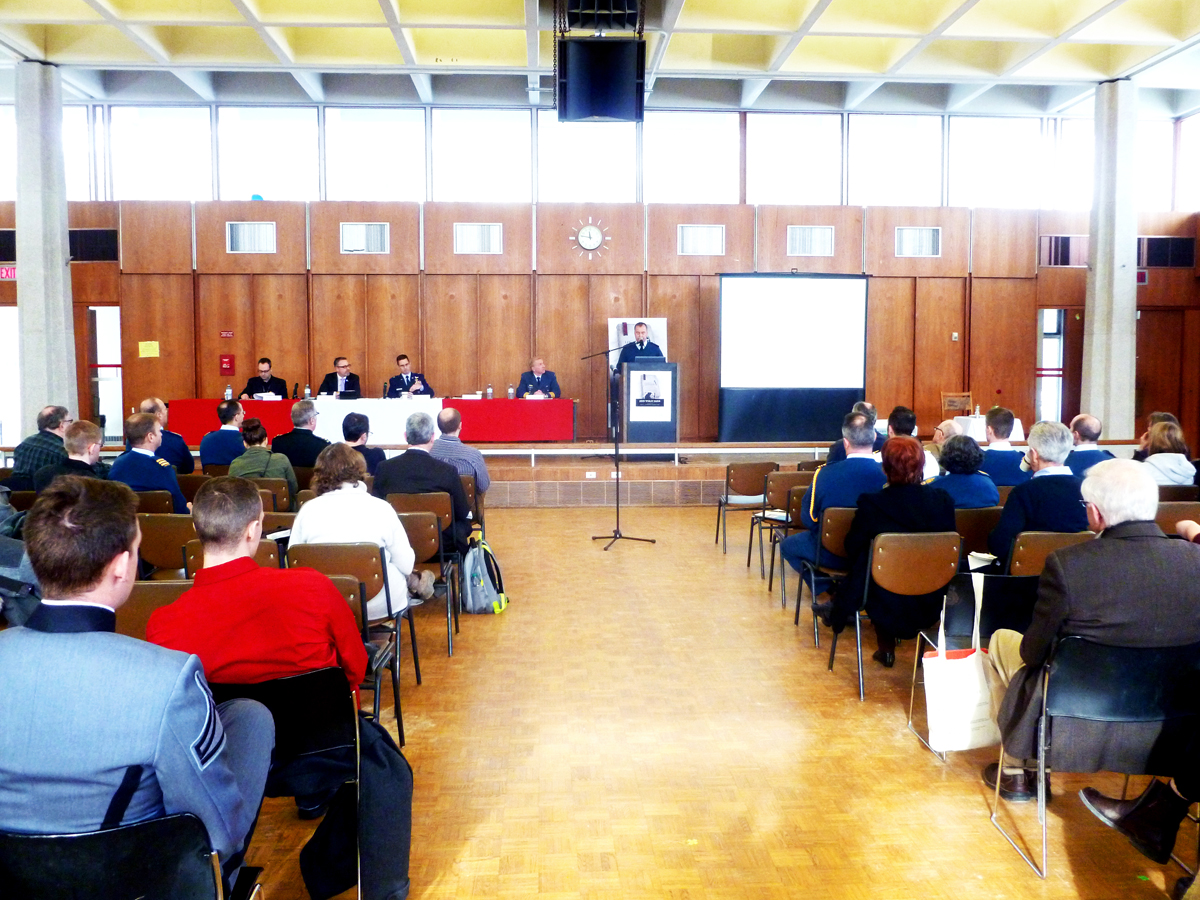This year’s annual University of Manitoba Political Studies Students’ Conference, titled “The Great Wars: Marking History and Humanity,” was held Jan. 28-30 at the University of Manitoba’s Fort Garry campus.
The forum focused on politics, defence, and security. Panellists examined the history and impacts of war, along with the future of war – specifically, the use of robotic drones and other sophisticated weaponry.
The event took place in University College’s Great Hall and was organized by students and faculty with the aid of the U of M Centre of Defence and Strategic Studies.
Paul Aseltine, master’s candidate in political studies and a conference organizer, told the Manitoban that the conference provided an excellent opportunity to mark 100 years since World War I, 75 years since World War II, and 25 years since the end of the Cold War.
“We were thrilled with the attendance at this year’s conference. We had a diverse group of speakers presenting on topics that range from the impact of wars on humanity, to the future of warfare. Overall it was a great success.”
The final panel discussion of the conference, titled “the Future of War,” featured a panel of distinguished speakers from the Canadian and French Forces. The panellists included Brig.-Gen. Bruce Ploughman of the Canadian Forces Air Division; Brig.-Gen. Charles Hyde of the United States Air Force; Bryan Peeler, research fellow at the U of M Centre for Defence and Security Studies; and Emmanuel Goffi, captain of the French Air Force.
During the discussion, Ploughman stressed the importance of strengthening protective and defensive strategies entering into complex warfare. Looking into the future requires Canada to “refresh” its war strategies, he added.
Remarking on the importance of acknowledging diverse battlefields—whether in reference to China, Iraq, Syria, Afghanistan, or Libya—he asserted that cookie-cutter models of defence are less likely to be consistently effective.
“Aerospace and meteorology can influence [our domains] where we can start,” Ploughman said.
Hyde, of the United States Air Force, added that the future of warfare looks decidedly different than in previous decades.
“The future of war is not war,” he said.
The future is about drones and technology, Hyde said, adding that there will be an intersection of different varieties of technology in modern war methods. Hyde conceded that there are challenges in how warfare can be reshaped by technological forces, saying that the concept of “robotics warfare is imaginative and is still 10-50 years ahead” of the current status of American military capability.
Future warfare may be asymmetric, and direct confrontation consequently deteriorates old themes of warfare, according to Hyde. The future of warfare is characterized by the “exploitation of space and cyber domains.”
“Insurgencies may not be our future war,” Hyde said, cautioning that the United States and its allies face many challenges as they move forward.
“New technology does not necessarily mean victory is assured.”
In fact, the failure to coordinate effective war strategies can increase the possibility to lose future wars despite technological improvements, according to Hyde.
Goffi, captain of the French Air Force, emphasized the historical legacy of war to understand that the “future of the war is not war.” He cited some modern robotics developments as evidence that modern warfare will look significantly different then it does today, and will include machines such as the Boston Dynamics Big Cats, Raytheon XOS 2 Exoskeletons, French Infantry Combat Systems, and General Atomics Aeronautical Systems.
“People are becoming robotic,” Goffi said.
Some 11,000 unmanned aerial vehicles and 12,000 ground robots are deployed by the United States, the world’s leader in military robotics. Goffi acknowledged the potential of 50 countries presently developing 900 different unmanned aerial vehicles. Across the globe, 76 countries possess drones, and at least 15 countries have the capacity to develop robots.
“It is up to us how to maintain a technology domain,” Ploughman said in his concluding remarks.
“How do we address proliferation of arms? And, how do we recruit people for future conflicts?”



